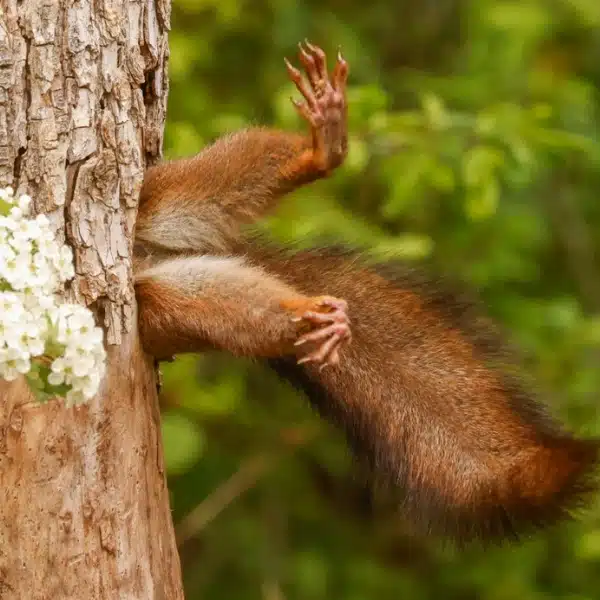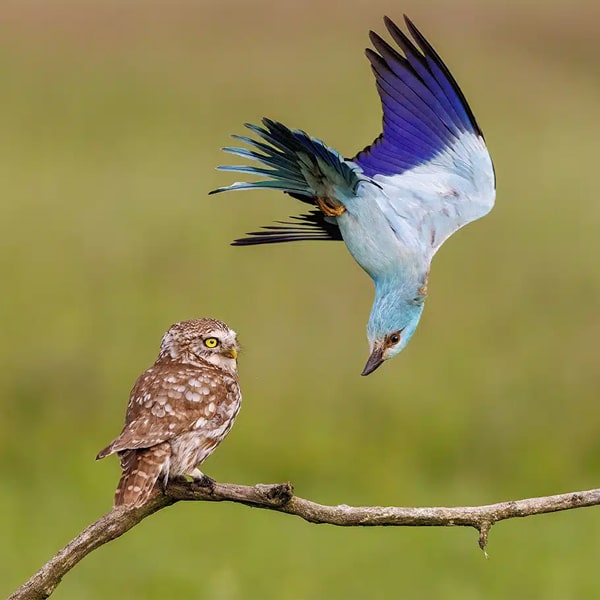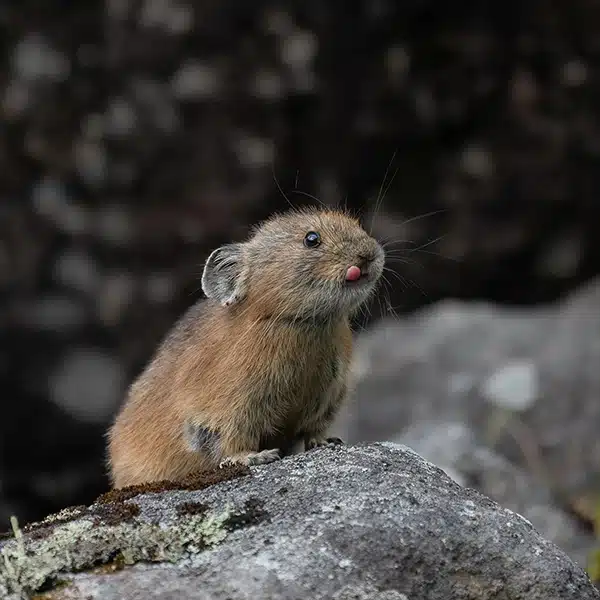
Puma captured on a camera trap. (Photo: WCS Ecuador)
We may never know the entirety of the natural world's vast beauty. But thanks to scientists from the Wildlife Conservation Society (WCS) we’re another step closer to figuring out one little corner of the Earth. For conservation research, the organization set up hundreds of camera trap stations all over the Amazon basin in order to capture images and video footage of wildlife in the region. The results offer a rare insight into the creatures' daily lives and habits.
“Many of the most cryptic species are incredibly difficult to study because they are so hard to observe, either because they are rare, shy, nocturnal, or all three (!), but multiple camera traps left in the forest for 1-2 months or more can observe them for us,” says Robert Wallace, the director of WCS’s Greater Madidi-Tambopata Landscape Program and co-author of the study. “Camera traps pick up animals when they are least expecting it—for example, giant anteaters (Myrmecophaga tridactyla) taking a mud bath, a crested eagle (Morphnus guianensis) drinking and taking a puddle bath, or a puma or cougar (Puma concolor) taking a nap.”
Data was collected over the course of two decades from 143 field sites in the Amazon basin. The WCS provided more than 57,000 images to be used in a new study that includes researchers from more than 100 institutions. The recent study was published in the scientific journal Ecology and compiled a collection of more than 120,000 images of nearly 300 species across eight countries in the Amazon region: Bolivia, Brazil, Colombia, Ecuador, French Guiana, Peru, Suriname, and Venezuela. The study’s main goal was to create a database of images of Amazon wildlife while also documenting habitat loss, fragmentation, and the effects of climate change.
Now, with the images contributed by the Wildlife Conservation Society, it has become the largest existing photo database of Amazon fauna. And it marks the first time that images from camera traps in different regions have been compiled and standardized on such a large scale. At the study’s completion, researchers had 154,123 images of 317 species, including 185 birds, 119 mammals, and 13 reptiles. Of all the mammals photographed, the one captured most frequently was the spotted or lowland paca (Cuniculus paca), a type of rodent. In total, the little furry critter was recorded almost 12,000 times.
The bird that was seen most often was the razor-billed curassow (Pauxi tuberosa), which made it on film more than 3,700 times. And the most common reptile was the gold tegu lizard (Tupinambis teguixin), seen on camera 716 times. But of all the photos included in the study, the focal species for the majority of the collection was the jaguar (Panthera onca), which some consider the “wildlife symbol of the Amazon.”
Though they were developed almost a century ago, camera traps weren’t used to study wildlife until the early 1990s. But since then, they’ve become an indispensable tool for conservation and wildlife research. They’re a simple and non-invasive way to collect information on the environment, and with the advancement of technology, they’ve only become more useful. This new study highlights their importance in more ways than one.
“With increasing concerns about the impact of climate change on wildlife distribution and abundance, this collated dataset provides a baseline with which we can monitor change over time into the future,” says Wallace. “It is also important to stress that analytical techniques are constantly evolving and making these data available is a huge step forward for science and wildlife in the Amazon.”
Scroll down to see more camera trap wildlife photos from the study, and watch the video to catch a glimpse of some Amazon wildlife in action.
A recent study used camera traps to capture more than 120,000 images and video footage of wildlife in the Amazon basin.
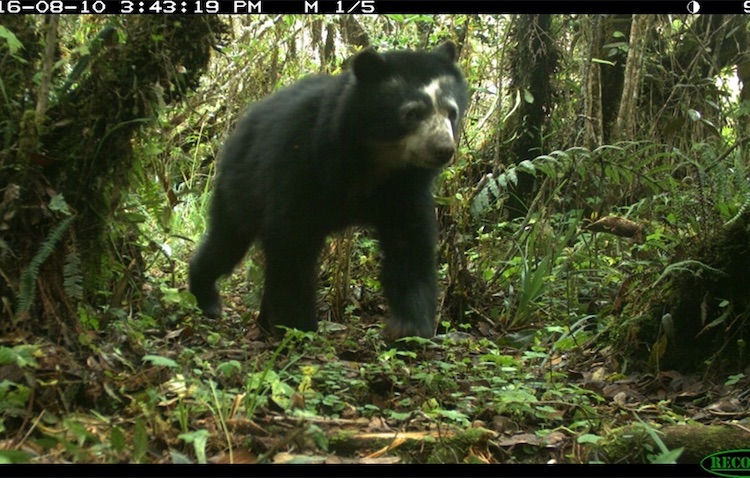
Andean bear captured on a camera trap. (Photo: WCS Ecuador)
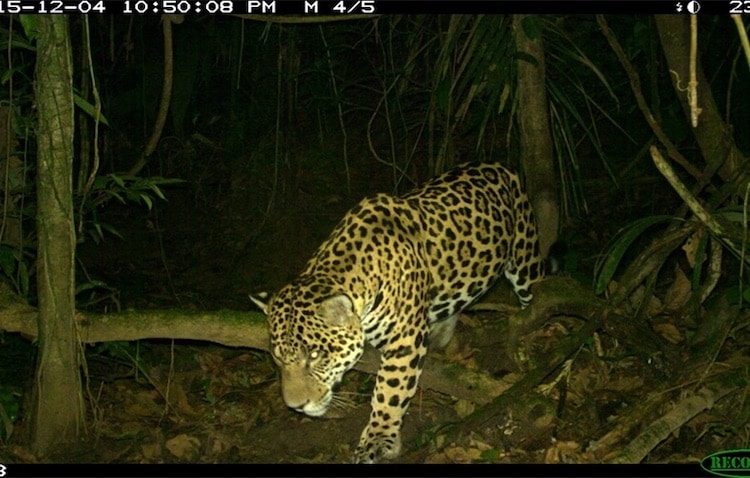
Jaguar captured on a camera trap. (Photo: WCS Ecuador)
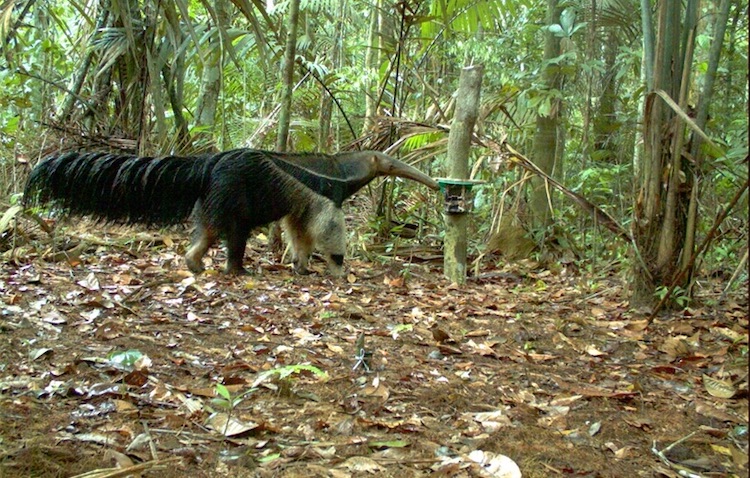
Giant anteater captured on a camera trap. (Photo: WCS Bolivia)
Watch this video to see the fascinating creatures in action.
Wildlife Conservation Society: Website | Facebook | Instagram | Twitter | YouTube
h/t: [Treehugger]
Related Articles:
Wildlife Photographer Captures Intimate Moments Between Mama Polar Bear and Her Cubs
Trail Cam Captures the Candid Moment When a Wolf Family Strikes a Majestic Pose
Adorable Baby Foxes Find a GoPro and Capture Footage of Themselves Playing
Camera Hidden in a Nest Captures Intimate Footage of Two Kestrels Raising a Family











































































